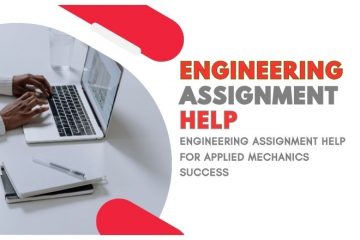Engineering students attend many lectures full of complex topics, formulas, diagrams, and examples. It can be hard to remember everything. That’s why taking good notes is very important. Proper notes help you understand concepts better, revise faster, and score higher in exams.
In this guide, we’ll explain how to take smart, clear, and useful notes in engineering classes.
Why Taking Notes Matters in Engineering
Engineering topics can get technical and detailed. Whether it’s a mechanical design, circuit diagram, or programming logic—writing it down in your own words helps your brain remember it better. Here’s why note-taking matters:
- Keeps you focused during class
- Helps you understand and organize difficult topics
- Makes exam preparation easier
- Saves time during revisions
- Helps with project work and lab reports
Before the Lecture: Prepare to Take Notes
Great note-taking starts before the class even begins. Here’s how you can prepare:
- Read the topic in advance: A quick preview helps you understand what the professor is saying.
- Bring the right tools: Carry a notebook, pen, ruler, highlighters, and calculator if needed.
- Sit where you can hear and see clearly. A front or middle seat helps you stay alert.
- Switch off distractions like phone notifications.
Different Note-Taking Styles You Can Try
You don’t have to follow one strict method. Try different styles and choose what works best for you.
1. The Outline Method
This is the most common and easy format. You start with main points and add sub-points under them.
Example:
- Thermodynamics
- First Law: Energy conservation
- Second Law: Entropy increase
This works well for theory-heavy subjects like civil, mechanical, and electronics.
2. The Cornell Method
Divide your page into three sections: notes, cues, and summary.
- Notes: Main lecture content
- Cues: Keywords, formulas, or questions
- Summary: A short recap at the bottom of the page
It helps if you want to review quickly before exams.
3. The Mind Map Method
Draw the main topic in the center of your page and branch out with arrows. Use small keywords, symbols, and colors.
This is great for visual learners and useful for subjects like computer networks, control systems, or software engineering.
4. The Charting Method
Make columns and write related information side by side.
This method is perfect for comparing processes, functions, or specifications—especially helpful in BTech Mechanical Engineering or Electrical Engineering courses.
What to Note During the Lecture
Don’t try to write every word your teacher says. Focus on understanding and writing down:
- Key concepts and definitions
- Important formulas and laws
- Diagrams and labeled sketches
- Real-life examples or case studies
- Repeated or highlighted points by the professor
- Questions or doubts you want to ask later
Use your own words unless it’s a definition or formula. That makes it easier to recall later.
Tips for Better Note-Taking
- Use bullet points for clarity
- Highlight or underline key terms
- Leave space between topics to add later
- Use symbols like → (leads to), Δ (change), or ≠ (not equal)
- Use abbreviations like “def.” for definition, “w/” for with, etc.
- Make diagrams clear and label everything neatly
After the Lecture: Review and Organize
The best time to review notes is within 24 hours after class. This is when your memory is still fresh.
- Rewrite messy parts
- Fill in gaps from the textbook or online resources
- Add examples or doubts to ask in the next class
- Mark confusing points to discuss with friends or teachers
- Create short summaries at the end of your notes
Digital vs. Handwritten Notes – Which Is Better?
Some students prefer digital apps while others stick to paper. Both have pros and cons.
Handwritten Notes:
- Better memory retention
- Easier to draw diagrams
- Helps focus during class
Digital Notes (Apps like OneNote, Notion, Evernote):
- Easy to search and organize
- Add images, links, and files
- Useful for sharing with friends
You can also mix both styles—take notes by hand and later scan or type them into a digital file.
Group Study Notes – A Smart Way to Learn
Studying with friends and comparing notes helps everyone. You’ll notice things others wrote down that you missed, and vice versa. You can also divide topics among group members and share summaries.
This is useful for revision during exams or while working on engineering projects.
Practice Note-Taking in Labs Too
Don’t just take notes during theory classes. Lab sessions are full of practical knowledge, steps, and results.
Write down:
- Experiment names
- Materials used
- Steps followed
- Observations
- Diagrams
- Final result and conclusion
These notes help you write better lab reports and prepare for practical exams.
Also read: https://blognetwork.live/blog/best-certifications-to-boost-your-career-after-bca-or-mca
Using Notes During Exam Time
When exams are near, your notes will save you time. Instead of reading full textbooks, just go through your summaries and highlighted points. You can also use flashcards or create cheat sheets (for study only!) to revise formulas and key ideas.
Conclusion: Note-Taking is a Skill You Can Build
Taking notes isn’t just about writing fast—it’s about listening, understanding, and recording what really matters. Like any other skill, it improves with practice. Try different styles, be consistent, and stay organized.
Good notes can make your engineering journey easier, smarter, and more successful.
About BFIT
If you are looking for an institute that not only offers quality education but also helps students build smart study habits, BFIT (Baba Farid Institute of Technology) is a great choice. Known as one of the best engineering college in Dehradun, BFIT offers strong academic support, updated course materials, and a student-friendly atmosphere. It is also recognized as an affordable private college in Dehradun for students pursuing BTech, BCA, IT, and other technical programs.
Also read our blog on : https://bfitgroup.in/top-government-exams-after-mechanical-engineering/
Read : https://telegra.ph/What-is-Engineering-A-Beginners-Guide-to-Courses-Specializations–Careers-05-07





